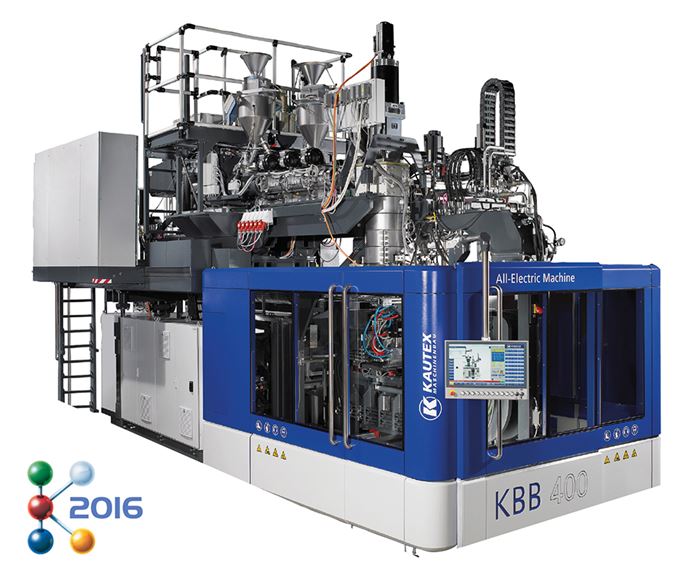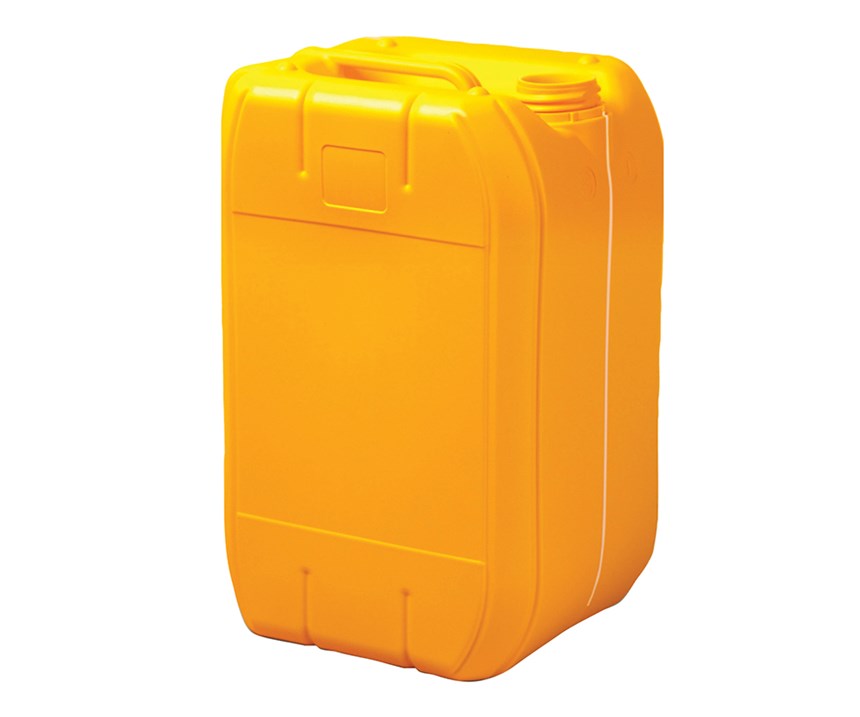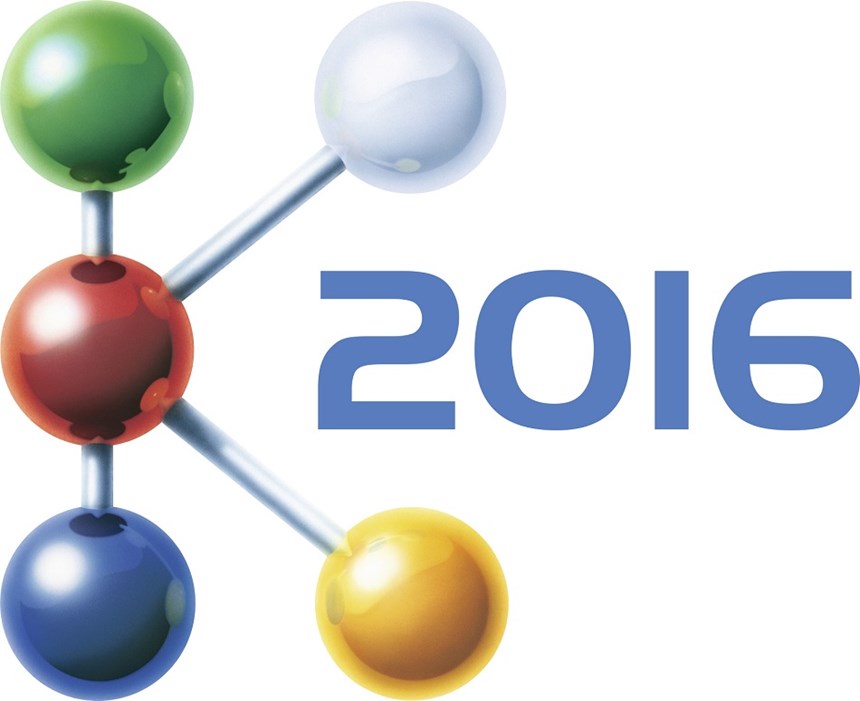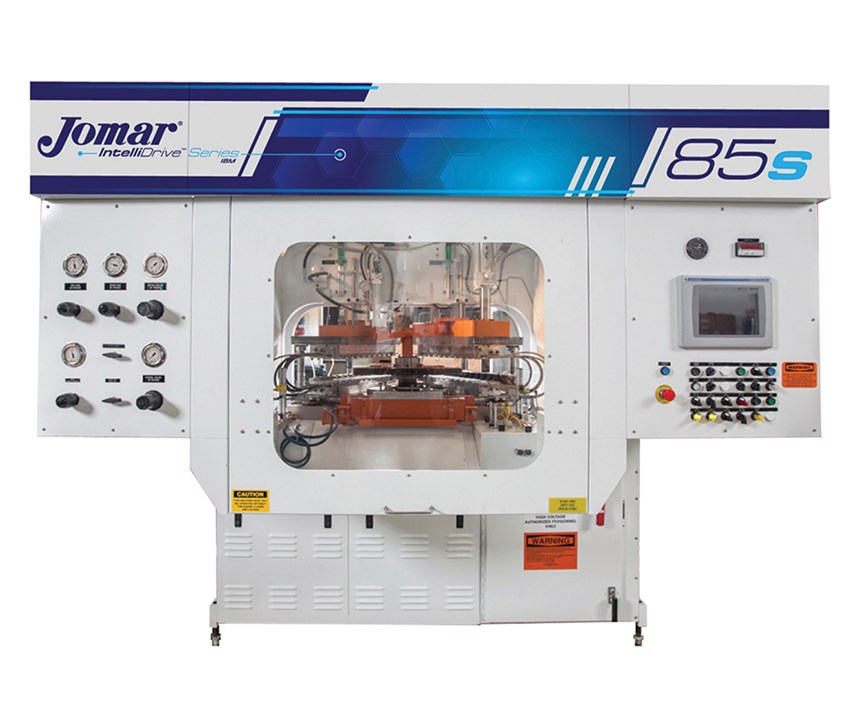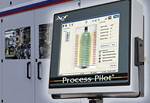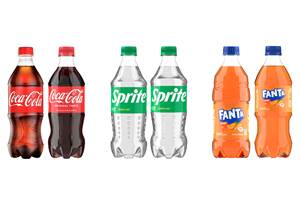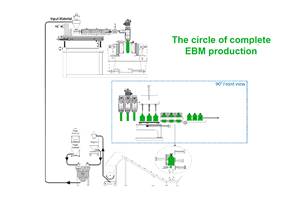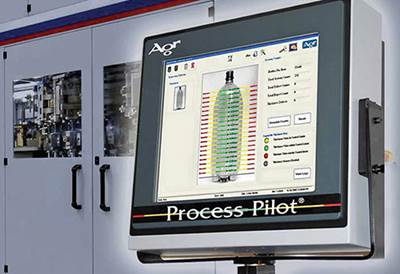K 2016 Preview: Blow Molding
Looking for speed and energy efficiency? Take your pick of new all-electric, hybrid, and servo-hydraulic machines.
Blow molding machinery suppliers appear to be holding their cards close to the vest, with only a few providing advance word of what they will be showing at K 2016. As for the pre-show news that has leaked out, what’s remarkable is that much of it comes from machine builders not in the blow molding business—at least not before now.
INJECTION-BLOW SURPRISES
After exploring development of all-electric and hybrid injection-blow machines, Jomar Corp., Egg Harbor Township, N.J., has decided that servo-hydraulic is the most cost-effective and customer-friendly way to go. Jomar announced hybrid machines with electric screw drive at K 2010 and K 2013 but concluded that maintenance costs were excessive. At this show, it is introducing the IntelliDrive series of servo-hydraulic machines that offer energy savings comparable to all-electrics (40-50% less than standard hydraulics) at a cost only 10-15% more than a conventional hydraulic unit and with no change in footprint.
With a variable-frequency pump drive, the new units use 40% less hydraulic oil and less than half as much cooling-tower water as standard hydraulics, while emitting substantially less ambient heat. Closed-loop clamp hydraulics and a digital displacement transducer reportedly offer more exact control and faster open/close speeds for a dry cycle of only 1.8 sec and reduced impact on tooling, extending its life. In addition, the reinforced main plate minimizes deflection, and the preform cylinder has a quick-change mounting system.
Jomar may be getting fresh competition from three suppliers of injection molding machines that will show presses modified for injection-blow molding at K. Last month’s Keeping Up previewed a developmental machine from Engel (U.S. office in York, Pa.) that is based on a horizontal, all-electric e-motion 220 press with the addition of a rotating cube mold from FOBOHA of Germany (U.S. office in Beverly, Mass.). Blowing occurs 180° opposite the injection position, and in the fourth station a six-axis robot removes the PP containers and places them on a conveyor. Described as a “proof-of-principle” pilot project, the current mold has eight cavities, but Engel says it could be scaled up to a whopping 96 cavities without compromising cycle time or accuracy.
Wittmann Battenfeld (U.S. office in Torrington, Conn.) will show its concept for injection-blow molding on a horizontal, servo-hydraulic SmartPower 240 press with a two-cavity, indexing-plate mold from Grosfilley of France. Preforms for 150-ml bottles are injected in one station, blown in the second, and ejected free-falling in the third. If a fourth station were added, the preforms could be overmolded with a second color or material.
Boy Machines (U.S. office in Exton, Pa.) also plans to present a machine for injection-blow but revealed no details.
ELECTRIC & HYBRID SHUTTLES
Two leading suppliers of extrusion blow machines will introduce larger models of all- or partially electric shuttles designed specifically for stackable jerrycans or canisters. Bekum (U.S. office in Williamston, Mich.) is extending its all-electric EBlow line with the hybrid EBlow 37, a single-sided machine for canisters of 10 to 35 L and production rates up to 240 canisters (20 L)/hr. Based on the proven BA 34.2 hydraulic canister machine, the new hybrid model offers energy savings and up to 15% higher output. It has an electric screw drive and clamp movements, but the closing pressure buildup is servo-hydraulic. Clamp force is 37 metric tons and mold width is 700 mm.
Kautex (U.S. office in North Branch, N.J.) is extending its all-electric KBB line, launched at K 2013, to larger sizes for jerrycans. New KBB200 and KBB400 models are said to set new benchmarks for speed and efficiency. At the show they will be equipped with three-layer heads for the Kautex ReCo process, which incorporates regrind in the center layer and colorant only in the outer layer. In addition, the production cell will included networked auxiliaries such as leak testers, scales, and vision cameras that are integrated with the main machine control—in keeping, Kautex says, with the trend toward Industry 4.0 and the “smart factory.”
ONLINE CRYSTALLINITY MANAGEMENT
For stretch-blown PET bottles, Agr International, Butler, Pa. will introduce the commercial version of a product that was still in beta testing at NPE2015 (see June ’15 Keeping Up). Called CrystalView, it’s an enhancement to Agr’s Process Pilot automated blow molder management system. CrystalView uses an electronic camera to monitor bottle haze as an indicator of crystallinity and thereby adjusts preform temperature so as to achieve the highest orientation and crystallinity—and maximum lightweighting potential—with lowest stress-cracking tendency.
For offline use, Agr will also unveil its Automated Laboratory Test Cell for bottles and preforms. With the aid of a pick-and-place robot, it performs multiple automated tests for thickness, dimensions, topload, volume, and pressure, and compiles test results in a single report.
Related Content
Coca-Cola’s Redesign of Small PET Bottles Pushes Lightweighting Below Prior ‘Floor’
Coca-Cola thought it had reached the limits of lightweighting for its small PET carbonated soft drink bottles. But a “complete redesign” led to a further 12% reduction.
Read MoreGet Color Changes Right In Extrusion Blow Molding
Follow these best practices to minimize loss of time, material and labor during color changes in molding containers from bottles to jerrycans. The authors explore what this means for each step of the process, from raw-material infeed to handling and reprocessing tails and trim.
Read MorePlastics Technology Year in Review: Your Favorite Reads of 2024
A year-end review of the top stories showcasing industry trends, advancements and expert insights. Revisit the articles that captured the attention of the plastics community.
Read MoreFor Extrusion and Injection-Blow Molders, Numerous Upgrades in Machines and Services
Uniloy is revising its machinery lines across the board and strengthening after-sales services in tooling maintenance, spare parts and tech service.
Read MoreRead Next
BLOW MOLDING: Monitor & Control PET Bottle Crystallinity & Barrier Properties
New QC functions predict shelf-life performance and help optimize physical properties based on crystallinity/orientation.
Read MoreLead the Conversation, Change the Conversation
Coverage of single-use plastics can be both misleading and demoralizing. Here are 10 tips for changing the perception of the plastics industry at your company and in your community.
Read MoreBeyond Prototypes: 8 Ways the Plastics Industry Is Using 3D Printing
Plastics processors are finding applications for 3D printing around the plant and across the supply chain. Here are 8 examples to look for at NPE2024.
Read More

